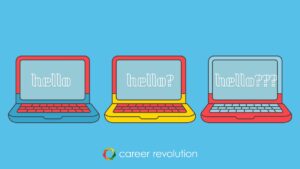MANAGING MILLENNIALS
Raise your hand if your office includes an espresso machine, Ping-Pong table AND a vintage arcade game (double points if it’s Ms. Pac-Man or The Simpsons). You may also offer healthy, organic, grass-fed snacks, yoga classes, dry-cleaning delivery service and a masseuse who comes by every Friday.
On top of that, you give regular training and feedback. (Or, you think you do. Don’t worry; we’ll get there.) And because you know that millennials want to develop their leadership skills, you’ve got a sweet development program for which employees can earn eligibility.
Yet, even with all these boxes checked, your engagement scores among this age group are flat lining. I bet you even see a constant churn in millennial employees after about 18 months.
If you’re nodding your head right now, please know that I’m not psychic. But, I have seen so many organizations and leaders in the same spot you’re in now. You’ve done all the “right” things, but you’re not getting the right results.
And it’s because you’ve bought into one (or more) of the biggest managing millennials myths out there. I’m about to break down those myths and show you the mistakes you’re making if you’ve bought into them. I’ll also give you some strategies to engage your 20ish to 30ish employees in the ways they crave.
MISTAKE 1: DIGITIZE ALL THE THINGS!
Here are some regular frustrations I hear from managers and leaders who are managing millennials:
“They overuse technology when communicating.”
“They address conflict over email or text.”
“They lack emotional intelligence.”
But, to solve the problem of millennials overusing technology to communicate and not using it appropriately, companies offer more training and feedback—via technology.
There’s a myth that organizations need to provide everything online from feedback to training to coaching to seem cool and save money. However, if we mimic what we see, then millennials are receiving critical feedback in a way that doesn’t feel authentic, real or human. Then, they think that’s the way they’re supposed to give feedback.
Vicious cycle, huh?
Leaders and managers need to show millennials the behavior and actions to mimic to create actual change.
Solution:
Technology is an accelerator; it’s not the teacher. Use technology when it’s appropriate for the situation. Don’t use it to teach emotional intelligence or communication skills. Don’t use it to have meaningful conversations.
Instead, use technology to augment your real-life career conversations. For example, a 360-feedback tool (I know a great one), can help you reinforce the messages and ideas you talk about IRL.
Another great use for tech is for learning that employees can access at any time and use at their own pace. For a great tool, check out LinkedIn Learning.
Finally, you can use technology to communicate short positive messages that reinforce larger development goals. Just don’t use it for long conversations that deserve a real response.
MISTAKE 2: AN ESPRESSO BAR SOLVES ALL PROBLEMS
There’s a line in the Gallup study, “How Millennials Want to Work and Live,” that illustrates this idea:
“Most millennials don’t care about the bells and whistles found in many workplaces today — the Ping-Pong tables, fancy latte machines and free food that companies offer to try to create job satisfaction. Giving out toys and entitlements is a leadership mistake, and worse, it’s condescending. Purpose and development drive this generation.”
I’m not saying you don’t need perks or a well-designed office (in fact, those aspects are almost expected right now). What I’m saying is that before your company offers $20,000 for an employee’s wedding, pays off student loans, gives free Tesla leases or provides regular housecleaning services, maybe consider investing that money in the development your employees crave.
Solution:
Perks will get employees in the door, but investing in career development is how you’ll be successful when managing millennials. Spend your money and time with on a feedback mechanism, and you’ll see the retention and engagement you’re looking for. It’s as simple as starting with a 15-minute conversation.
MISTAKE 3: YOU CAN BE A LEADER … ONCE YOU’VE EARNED IT
Millennials rate leadership as the most prized skill to develop for career success. But, 63% say their leadership skills aren’t being fully developed by their company. And 71% of those who say they will resign in next two years say they are unhappy with how their leadership skills are being developed.
That’s a big problem.
Too often, companies save leadership development programs for top performers who have “earned” it by being loyal for multiple years.
But, that mentality doesn’t work when your millennial employees plan to leave in two years if they don’t get leadership development.
Solution:
Democratize your leadership development programs. Most companies don’t have the luxury of identifying the top 10% of employees and waiting to see if they prove worthy of the investment.
Instead of only investing a significant amount of money in a small percentage of employees, spread that budget more evenly across your organization to employees of all ages and experience. You’ll be able to spot talented future leaders more quickly and cultivate their skills before they quit.
What will you do next?
Now that you know the mistakes you could be making and have read the solutions I’ve presented, what do you think? Are you eager to try a new tactic or scared to turn your back on the investments you’ve already made? Email me and let me know. I can help guide you through this transition and figure out the best way to develop your millennial employees.








